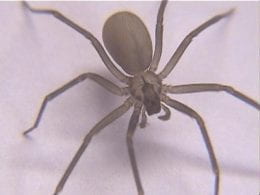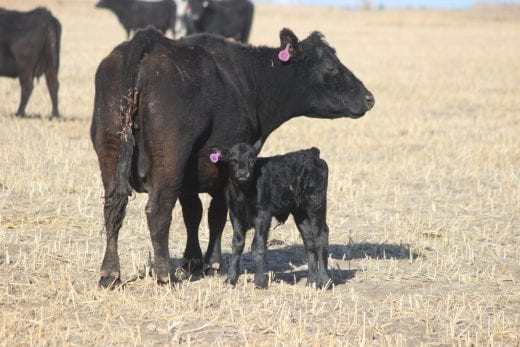This week in Better Kansas, we touch on the 2020 Census, brain health, more bugs, soybean market outlook, cattle recordkeeping and early industrial hemp research in Kansas. This is a small glimpse of what K-State Research and Extension across the state has to offer. Share on social media and subscribe! – Mary Lou Peter mlpeter@ksu.edu
Better Living, Better Communities
GREAT JOB, KANSAS! It’s so nice to have some good news. With just days left to respond to the 2020 U.S. Census, 98.6% of Kansas households had responded, according to the U.S. Census Bureau. That beats the national response rate of 95% as of Sept. 22. For a current look at the response rate in Kansas and other states, check out the U.S. Census 2020 website. By the way, if you’re reading this and have not responded, you have until Sept. 30, so get in there and make sure our neighborhoods, communities and state get our share of billions of federal dollars that go to hospitals, fire departments, schools, roads and other critical resources.
 BE HONEST, HOW MANY TIMES HAVE YOU CLIMBED THE STAIRS with five different things on your mind (or maybe just one?! :-0), and forgotten why you went up to that room to start with? It happens to all of us for various reasons. In Keys to Embracing Aging: Brain Activity, we learn about ways we can stay mentally fit through socialization, nutrition, sleep, physical activity, and mental stimulation. It sounds so easy, but that’s not always so. Our lives just don’t always lend themselves to taking good care of ourselves … sometimes a little retooling is in order. And let me be clear, it’s not strictly an age thing. Ask any woman who just had a baby about Mommy brain or brain fog. And guys, I have plenty of anecdotal evidence, it’s not just us girls.
BE HONEST, HOW MANY TIMES HAVE YOU CLIMBED THE STAIRS with five different things on your mind (or maybe just one?! :-0), and forgotten why you went up to that room to start with? It happens to all of us for various reasons. In Keys to Embracing Aging: Brain Activity, we learn about ways we can stay mentally fit through socialization, nutrition, sleep, physical activity, and mental stimulation. It sounds so easy, but that’s not always so. Our lives just don’t always lend themselves to taking good care of ourselves … sometimes a little retooling is in order. And let me be clear, it’s not strictly an age thing. Ask any woman who just had a baby about Mommy brain or brain fog. And guys, I have plenty of anecdotal evidence, it’s not just us girls.
HERE I GO AGAIN WITH THE BUGS….
 If you have generally come to an agreement with the bugs in your neighborhood, that they stay in their space and you stay in yours, it’s easy to coexist with them. I don’t often find bugs in my house but have encountered three spiders in the last two weeks. I read somewhere that they’re just looking for a warm place as the days and nights get cooler. Can’t blame them but I really don’t want to share my personal space with them, either. Take a look at Household Insects of Kansas for all kinds of good information about everything from boxelder bugs to crickets to termites and everything in between. There’s even info on Firebrats … there really is such a thing and it’s not a tv show about superhero kids.
If you have generally come to an agreement with the bugs in your neighborhood, that they stay in their space and you stay in yours, it’s easy to coexist with them. I don’t often find bugs in my house but have encountered three spiders in the last two weeks. I read somewhere that they’re just looking for a warm place as the days and nights get cooler. Can’t blame them but I really don’t want to share my personal space with them, either. Take a look at Household Insects of Kansas for all kinds of good information about everything from boxelder bugs to crickets to termites and everything in between. There’s even info on Firebrats … there really is such a thing and it’s not a tv show about superhero kids.
And one more thing … rest in peace RBG and know that you did your job well. Many of us benefitted from your strength, courage and wisdom, including me.
Better Farming, Ranching and Gardening
SOME GOOD NEWS ON THE AGRICULTURE FRONT is that soybean prices have trended higher and may stay strong for a while. In the Sept. 11 Crop Production and World Agricultural Supply and Demand Estimates, known in ag circles as WASDE, the USDA projected the U.S. soybean average farm price at $9.25 per bushel, up $0.90 or 10.8% from the $8.35 per bushel it had projected in its Aug. 10 report. Take a look at the Soybean Market Outlook in September 2020 for much more information about the soybean market and what’s affecting it.
WITH MORE THAN 1.5 MILLION HEAD OF BEEF COWS IN KANSAS, producers have a lot to keep track of. Whether you have 30 cows or 300 or more, it’s important to keep good records on calving, vaccinations, treatment and other data. The Cow/Calf Record Book was designed to help with that recordkeeping. In addition to space for individual records, it provides a guide to body condition scoring, a gestation table, and other information. “You can’t manage what you don’t measure,” the authors say, and with the farm economy right now, people who know about these things say that now more than ever, management is the name of the game. Take a look.
MAYBE YOU’VE HEARD, K-STATE IS DELVING INTO RESEARCH ON INDUSTRIAL HEMP and its possibilities as a commercial crop for Kansas. Check out a research report on initial studies, a news article about studies focused on analyzing the safety of industrial hemp for use as cattle feed, plus listen to a Dig Deep podcast featuring a researcher who is leading industrial hemp crop studies at sites across the state. Since we’re in the early stages, I’ll keep you posted!
_
For more resources and activities, contact the K-State Research and Extension office in your area. Check out our other blogs and subscribe to our weekly emails here: https://www.ksre.k-state.edu/news/blogs/










